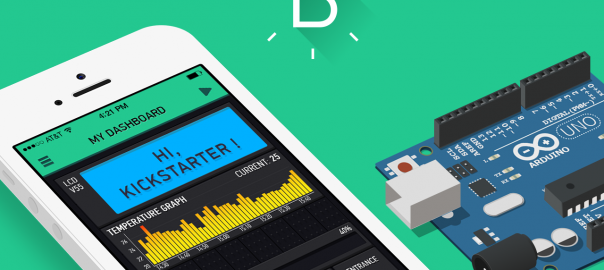Blynk is an app with which you can control any piece of electronics you have build, eg. a circuit build with an Arduino. To get started with Blynk, you can follow the getting started guide: www.blynk.cc/getting-started then continue at step 5 of docs.blynk.cc (under getting started) to add a first Widget. The first example (BlynkBlink) builds an app which controls a LED, which is connected to pin 8 of an Arduino. In this example, the Arduino uses a serial connection (USB) to the computer, through which it connects to the internet (and communicates with the Blynk Cloud service). This guide assumes you already have some basic knowledge of Arduino and electronics.
![]()
Some additional help:
- Beware: Blynk is not free, but building project(s) costs ‘energy’, you get ‘2000’ of energy for free, enough for small projects
- You can download the Blynk library here, extract the zip-file, copy contents of folder ‘libraries’ to Documents\Arduino\libraries and content of ‘tools’ to Documents\Arduino\tools
- After step 3 (installation of the Blynk library) (re)start the Arduino IDE, and check the Tools menu: it should contain 3 Blynk: entries.
- Blynk App: When setting up the device, make sure you select the proper hardware model (eg. Arduino Nano) and connection type (USB for first example ‘BlynkBlink’).
- When building the Blynk Userinterface (5. Add a Widget): a button is added to control a LED. The pin to which the LED is connected will be the output of the Button. Make sure you select the right output (see screenshot), the first ‘square’ is the PIN (from the Arduino), for instance D5 (if you connected the LED to digital pin 5). The numbers behind it should remain 0 and 1 (for the value: low and high).
Arduino over USB (no wifi)
In the Arduino IDE, to quickly start a sketch with Blynk you may use File > Examples > Blynk > Boards_USB_Serial > Arduino_Serial_USB
Next step
Blynk alternatives
Other apps that can communicate with an Arduino
